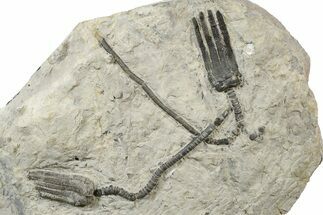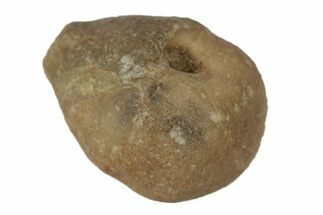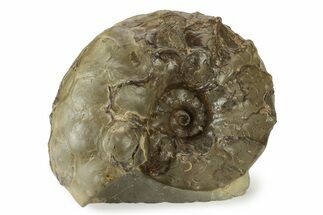This Specimen has been sold.
3.2" 3D, Triassic Fossil Crinoid (Encrinus) - Germany
This is an impressive, 3.2" long, fossil crinoid (Encrinus liliiformis) from the Muschelkalk Formation of Lamerden, Germany. There is a second, partial crinoid that has been exposed from the rock as well. These crinoids are Triassic in age, or approximately 230 million years old, and are very inflated and nicely prepared.
Unlike the majority of specimens from this location, the rock under this fossil is quite stable and didn't require significant repair and stabilization. That being said, there is one repaired crack that runs through the largest crinoid, however it required minimal crack repair.
One edge of this specimen has been cut flat, though it's accompanied by a display stand to assist with preferred presentation.
Unlike the majority of specimens from this location, the rock under this fossil is quite stable and didn't require significant repair and stabilization. That being said, there is one repaired crack that runs through the largest crinoid, however it required minimal crack repair.
One edge of this specimen has been cut flat, though it's accompanied by a display stand to assist with preferred presentation.
Crinoids, sometimes commonly referred to as sea lilies, are animals, not plants. They are echinoderms related to starfish, sea urchins, and brittle stars. Many crinoid traits are like other members of their phylum; such traits include tube feet, radial symmetry, a water vascular system, and appendages in multiples of five (pentameral). They first appeared in the Ordovician (488 million years ago) and some species are still alive today.
SPECIES
Encrinus liliiformis
LOCATION
Lamerden, Germany
FORMATION
Muschelkalk Formation
SIZE
3.2" on 7.7 x 5.9" rock
CATEGORY
SUB CATEGORY
ITEM
#192530
We guarantee the authenticity of all of our specimens.
 Reviews
Reviews












